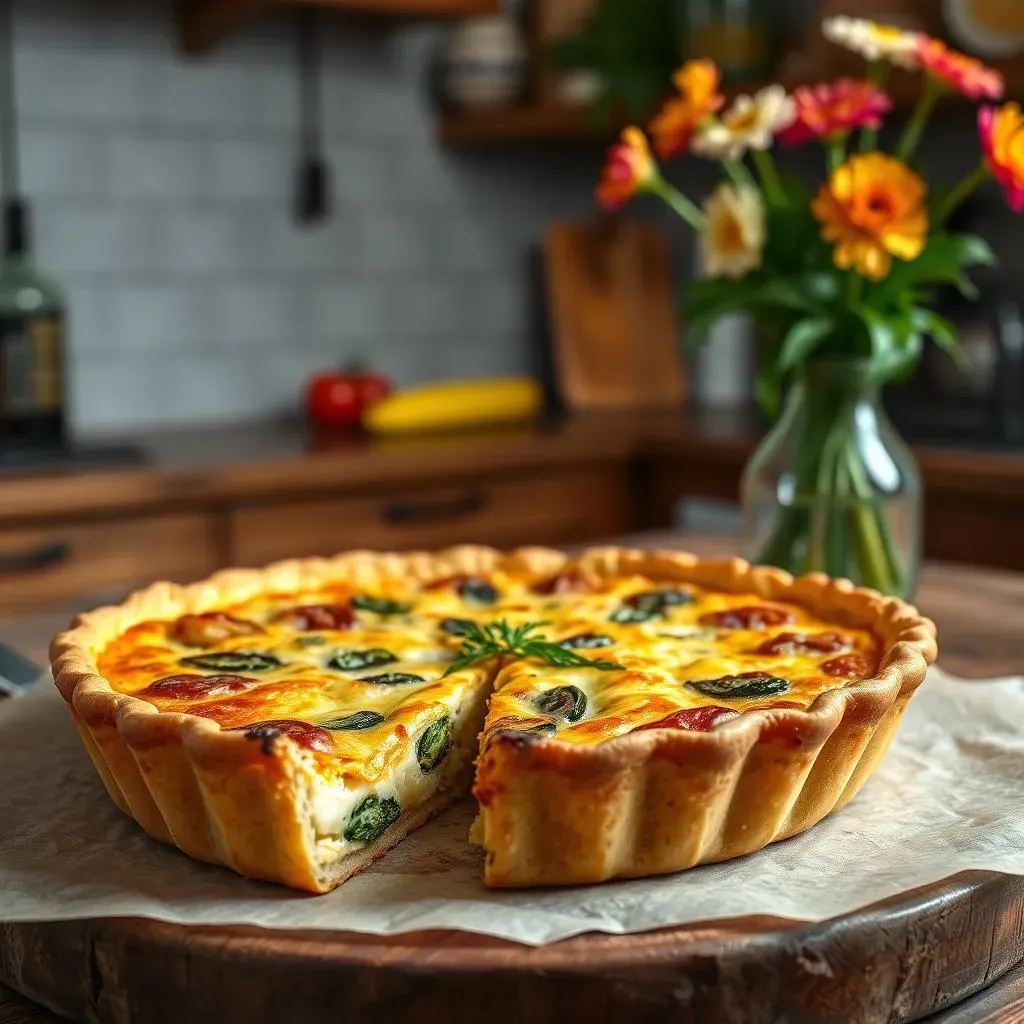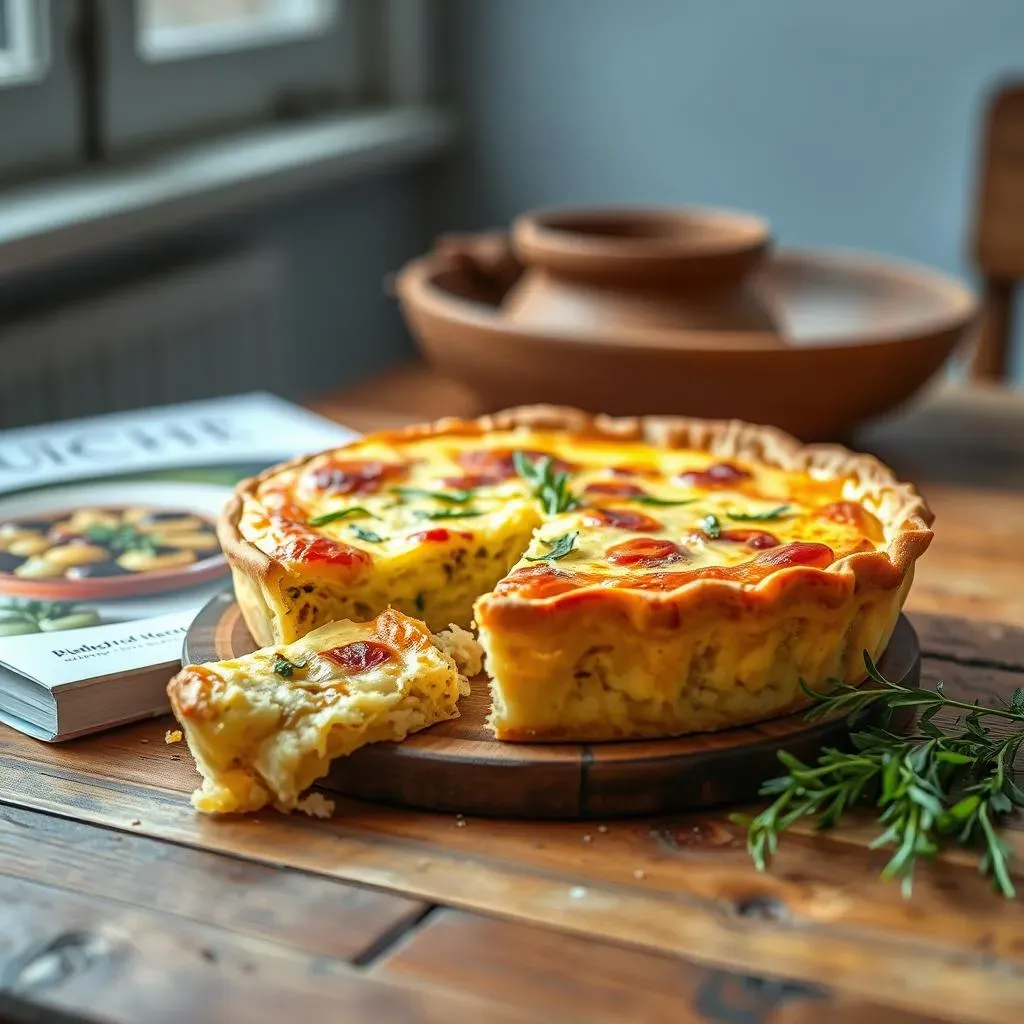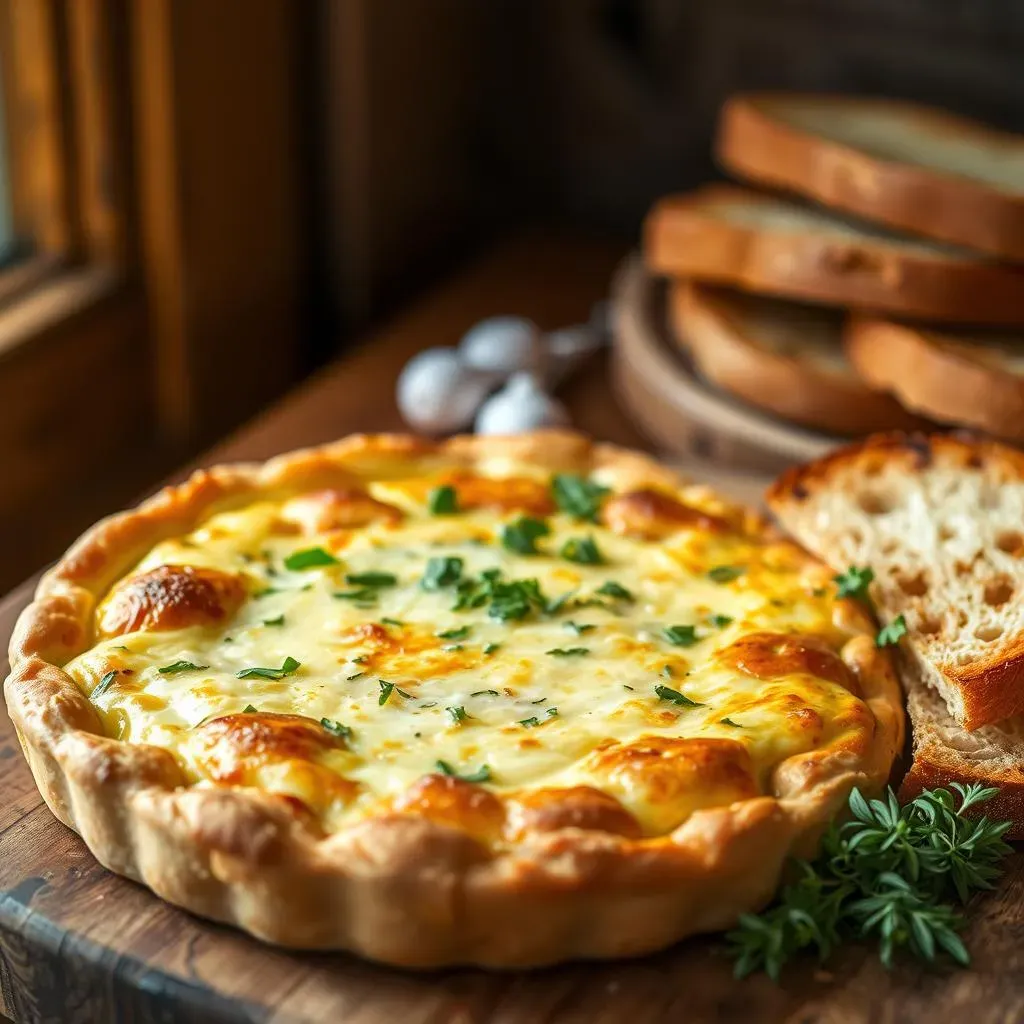Table of Contents
Ever stared longingly at a quiche recipe, only to discover you're out of milk? Don't despair, fellow bakers! We're tackling a common kitchen query: "Can I substitute sour cream for milk in quiche?" This article is your ultimate guide to navigating this creamy conundrum. We'll explore the nuances of swapping milk for sour cream in your favorite quiche recipe, examining how this substitution impacts texture, taste, and overall success. We'll delve into the reasons why this swap might (or might not!) work, providing you with the knowledge to make informed decisions in the kitchen. Get ready to unlock the secrets to a perfect quiche, regardless of your pantry's current state. Whether you're a seasoned chef or a baking newbie, this guide will empower you to confidently experiment and achieve delicious results. Let's get started on this culinary adventure!
Can I Substitute Sour Cream for Milk in Quiche?

Can I Substitute Sour Cream for Milk in Quiche?
So, you're wondering if you can swap sour cream for milk in your quiche recipe? It's a valid question, and the answer is…maybe! It depends on what you're aiming for. Sour cream is thicker and tangier than milk. Using it as a direct replacement will result in a denser, more intensely flavored quiche. The texture will be richer and creamier, but potentially a bit heavier. Think of it like this: milk provides a light, airy base, while sour cream adds a luxurious richness. This means the result won't be a carbon copy of a milk-based quiche, but it could be delicious in its own right.
Ingredient | Effect on Quiche |
|---|---|
Milk | Lighter, airier texture; milder flavor |
Sour Cream | Denser, richer texture; tangier flavor |
The key is to understand how the change will alter the final product. If you like a lighter, fluffier quiche, then sour cream isn't the best choice. However, if you crave a richer, creamier, and slightly tangier quiche, then a substitution might be just what your recipe needs. It's all about balancing flavor and texture preferences. Don't be afraid to experiment! A little trial and error will lead you to your perfect quiche creation.
- Consider the other ingredients in your recipe. If you're already using strong cheeses or flavorful additions, the tang of sour cream might be overpowering.
- Start with a small substitution. Don't replace all the milk with sour cream at once. Begin by substituting a portion and see how it turns out.
- Adjust baking time as needed. Because sour cream is thicker, your quiche might take a little longer to bake.
The Great Quiche Ingredient Swap: Sour Cream vs. Milk

The Great Quiche Ingredient Swap: Sour Cream vs. Milk
Fat Content and Texture
Let's get down to the nitty-gritty: fat content. Milk, even whole milk, is significantly lower in fat than sour cream. This difference directly impacts the texture of your quiche. Milk contributes to a lighter, more delicate custard-like texture. Sour cream, on the other hand, packs a punch of fat, resulting in a richer, denser, and creamier final product. Think of it like the difference between a fluffy omelet and a creamy crème brûlée – both delicious, but with vastly different textures.
Ingredient | Fat Content (approx. per cup) | Quiche Texture |
|---|---|---|
Whole Milk | 8 grams | Light, airy |
Sour Cream | 20 grams | Rich, creamy, dense |
Flavor Profiles: A Tangy Twist
Beyond texture, the flavor profiles of milk and sour cream differ considerably. Milk provides a neutral backdrop, allowing other ingredients to shine. Sour cream, however, introduces a distinct tanginess that can either elevate or overpower a quiche's other flavors. This tang can be a delightful addition, complementing savory ingredients like bacon, mushrooms, or spinach. However, if your quiche recipe already features bold cheeses or herbs, the sour cream's acidity might clash, creating an unbalanced flavor profile. Consider the overall flavor balance before making the swap.
- Mild cheeses (e.g., Gruyere, Swiss)
- Savory vegetables (e.g., spinach, mushrooms, asparagus)
- Herbs (e.g., thyme, chives, parsley)
The Practical Application: Making the Swap
So, how do you successfully incorporate sour cream into your quiche? The key is moderation and careful consideration of your recipe's other elements. Don't simply substitute cup for cup; start with a partial swap, perhaps replacing half the milk with sour cream. This allows you to gauge the impact on both texture and taste. You may also need to adjust the baking time, as a sour cream-based quiche might require a few extra minutes to set properly due to its increased density. Remember, experimentation is key! Don't be afraid to tweak and adjust until you achieve the perfect balance of flavor and texture.
"The beauty of cooking is in the experimentation. Don't be afraid to break the rules and discover your own unique flavor combinations." - Unknown
Tips and Tricks for a Perfect Sour Cream Quiche

Tips and Tricks for a Perfect Sour Cream Quiche
Prepping Your Ingredients: The Key to Success
Before you even think about cracking those eggs, proper ingredient prep is crucial for a killer sour cream quiche. Make sure your vegetables are finely chopped and evenly distributed—nobody wants a chunky surprise in their creamy bite. If using meats, pre-cook them until crispy to avoid a soggy bottom. And don't forget to grate your cheese finely for even melting and distribution. Think of it as an orchestra; each instrument (ingredient) needs to be perfectly tuned for a harmonious symphony of flavors.
Remember to bring your eggs and sour cream to room temperature before mixing. This ensures a smoother, more evenly cooked quiche. Cold ingredients can lead to curdling and uneven baking.
Ingredient | Preparation Tip |
|---|---|
Vegetables | Finely chop and distribute evenly |
Meats | Pre-cook until crispy |
Cheese | Grate finely |
Eggs & Sour Cream | Bring to room temperature |
Baking to Perfection: Achieving the Golden Crust and Creamy Center
Baking your sour cream quiche requires a gentle touch and careful attention. Preheat your oven thoroughly to ensure even cooking. Start by baking at a slightly lower temperature (around 350°F or 175°C) for a longer time to prevent the crust from browning too quickly while ensuring the filling sets beautifully. A good tip is to use a pie crust shield or aluminum foil to cover the edges of the crust during the initial baking to avoid over-browning. A perfectly baked quiche boasts a golden-brown crust and a creamy, set filling. Avoid overbaking, which can lead to a dry, rubbery texture.
Use a thermometer to check the internal temperature of your quiche. It should reach 160°F (71°C) for food safety. Don't rely solely on visual cues; a thermometer provides a definitive answer.
- Preheat oven thoroughly
- Bake at a lower temperature for longer
- Use a pie crust shield or foil
- Check internal temperature with a thermometer
- Avoid overbaking